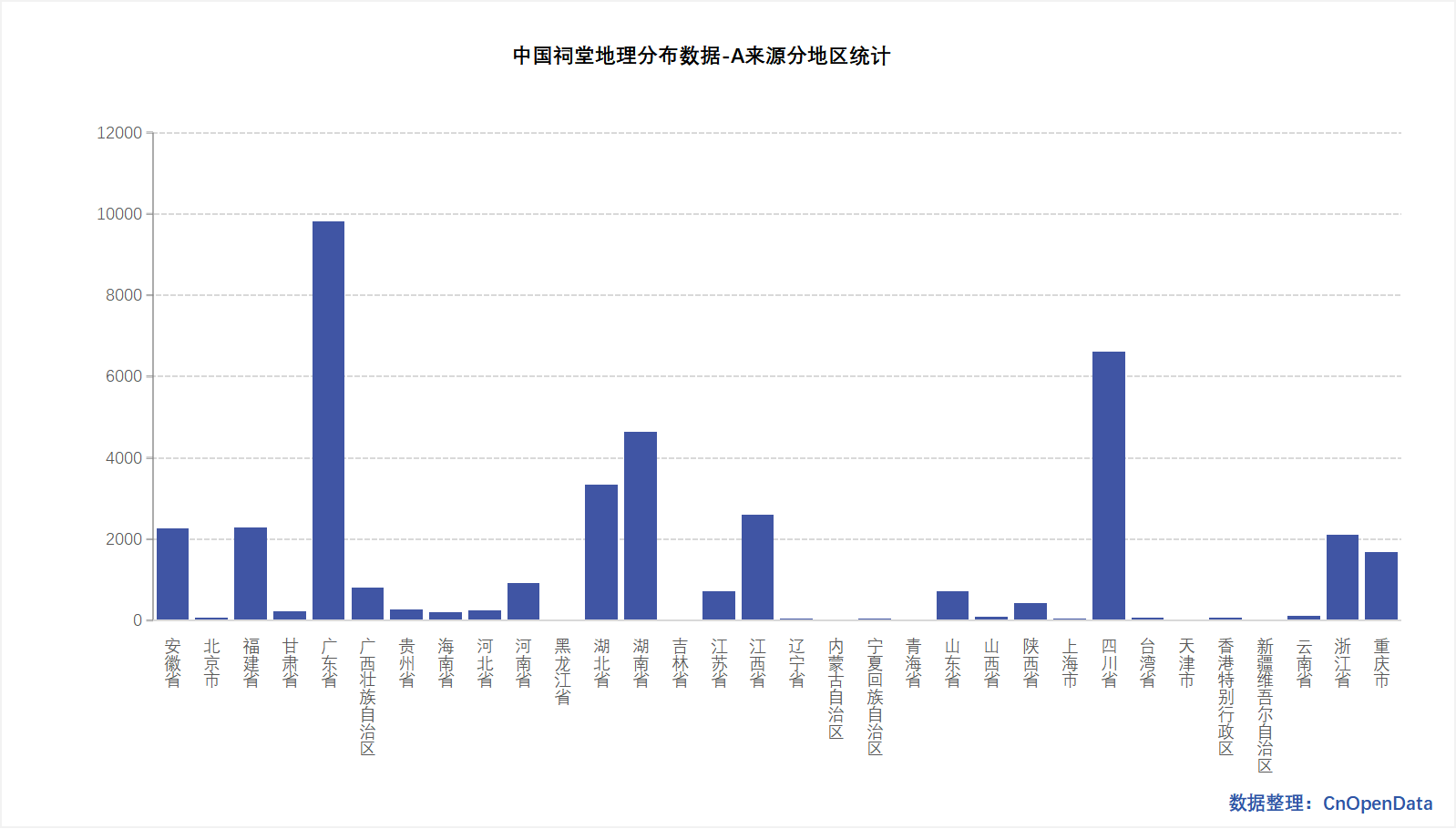The Chinese Ancestral Hall Geographical Distribution Database systematically compiles detailed information on ancestral halls across various regions in China, including ancestral hall names, geographical locations, affiliated provinces and cities, latitude and longitude coordinates, associated surnames, and historical backgrounds. As crucial carriers of family worship and clan cultural inheritance in traditional Chinese culture, the geographical distribution data of ancestral halls not only reflects the spatial characteristics of Chinese folk beliefs and kinship systems but also provides essential foundational materials for researching local social structures, population migration history, and cultural heritage preservation. This dataset encompasses multidimensional information, supporting spatial analysis and in-depth interdisciplinary research in humanities and social sciences.
Data Features:
- Data Uniqueness: This database integrates ancestral hall information from multiple public sources, demonstrating strong comprehensiveness and systematicity. Beyond basic geographical identifiers (e.g., provincial/municipal codes, latitude/longitude), it incorporates cultural attributes (e.g., surname origins, descriptive content), exhibiting distinctive cultural-geographical integration features suitable for interdisciplinary studies.
- Data Completeness: Covering most provinces, municipalities, and autonomous regions nationwide, the dataset includes two forms: "Chinese Ancestral Hall Geographical Distribution Data - Source A" and "Chinese Ancestral Hall Geographical Distribution Data - Source B". These respectively document ancestral hall information from geographical and cultural perspectives. Its comprehensive field design spans macro-level regional codes to micro-level detailed addresses and surname cultural introductions, facilitating seamless integration with GIS platforms or statistical analysis.
- Data Reliability: Sourced from credible public channels, the data undergoes systematic cleaning and organization to ensure consistency between geographical coordinates and cultural descriptions. Annual updates continuously enhance content quality and coverage, ensuring high accuracy and practicality for academic research, cultural preservation, and commercial decision-making applications.
The CnOpenData Chinese Ancestral Hall Geographical Distribution Database represents a high-quality resource integrating geographical information with cultural significance. It is applicable to in-depth research and application development in human geography, sociology, history, cultural tourism, and related fields. Its comprehensive field design, extensive coverage, and stable annual update mechanism establish it as a trustworthy foundational dataset for academic and practical endeavors.
Data Scale


Time Coverage
Source A comprises cross-sectional data capturing ancestral hall geographical distributions based on map information, current as of 2024.
Source B originates from Ancestral Temples Network (宗祠网), representing cross-sectional data current as of June 30, 2025.
Field Display
Sample Data
中国祠堂地理分布数据-A来源
中国祠堂地理分布数据-B来源
Data Update Frequency
Annual updates
